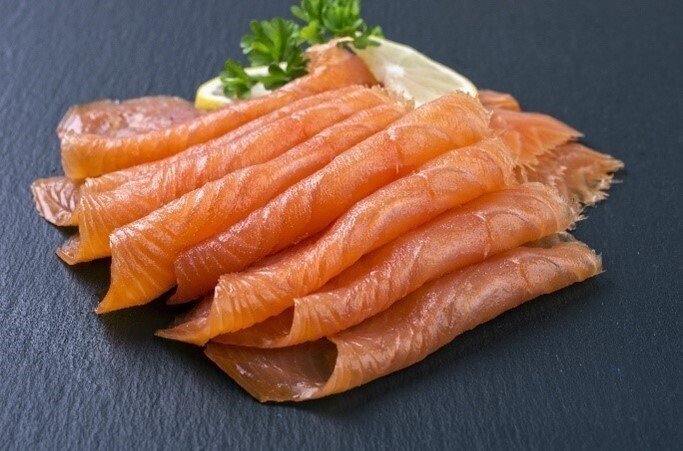What is listeria?
Listeria monocytogenes (listeria) is a bacteria which causes an infection called listeriosis. This bacteria is widespread in the environment however most cases of listeriosis are due to the consumption of contaminated food. Cases of listeriosis are rare and healthy adults are likely to experience only mild infection, with symptoms similar to flu (high temperature, aches and pains, chills), or gastroenteritis (nausea, vomiting and/or diarrhoea). However, for some individuals, it can cause serious illness (called invasive listeriosis), which can result in hospitalisation and death. Due to the long incubation period for listeria (up to 70 days) it can be difficult to determine the key sources of infection.
Download our fact sheet on listeria.
People who are at higher risk of illness
Pregnant women (and their unborn babies), and people with weakened immune systems are more susceptible to developing listeriosis and likely to suffer more severe symptoms.
People with weakened immune systems include those suffering from underlying health conditions, such as, but not limited to, cancer, kidney disease or diabetes, and those receiving certain medical treatments or medications such as chemotherapy and immunosuppressants.
As the immune system weakens with age, older adults (usually defined as those who are aged 65 and over) can be more susceptible to listeriosis compared with the general population. The level of risk will depend on the person's health status and increases as they get older, so it is important to be aware of the foods that can be associated with listeria, and the steps that can be taken to prevent infection.
Understanding the risks
Although a wide range of foods can become contaminated with listeria, it is most commonly associated with chilled ready-to-eat foods that do not require further cooking or reheating. Food businesses are required to apply food safety controls to make sure listeria is not present at unsafe levels in these foods, but if they are not stored correctly the bacteria may grow and present a hazard.
Examples of chilled ready to eat foods include:
- cold smoked and cured fish, including sushi (more information below)
- cold cooked sliced meats
- cured deli meats
- cold pre-cooked shellfish
- soft mould-ripened cheeses (e.g. camembert, brie and blue-veined cheeses)
- pâté
- pre-prepared sandwiches and salads
- unpasteurised dairy products
- pre-cut fruits and vegetables
Steps to reduce the risks
When preparing food at home, it’s important to:
- keep chilled ready to eat foods cold – make sure your fridge is working properly and is set to 5°C or below
- always eat, cook or freeze foods by their use-by date. Visit our date labelling page for more information on use-by dates.
- follow the storage instructions on the label and use opened foods within 2 days unless instructions on the packaging say otherwise
- eat ready-to eat foods within 4 hours of being taken out of the fridge
- ensure that you follow manufacturer’s instructions in the preparation of all foods
- keep raw and ready to eat foods separate to avoid cross contamination
- wash hands with soap and water before preparing food, including when opening packaged foods
Advice for healthcare and social care organisations
We have developed guidance for healthcare and social care organisations to help protect people within their care from contracting listeriosis.
Reducing the risk of vulnerable groups contracting listeriosis.
Cold smoked and cured fish
People who are pregnant or have a weakened immune system are more likely to suffer severe symptoms from listeria infection and are advised to avoid eating ready-to-eat cold-smoked or cured fish products.
As the risk of serious illness from listeriosis increases with age, older adults should also be aware of the risk of eating cold smoked and cured fish and take steps to prevent listeria infection. These steps include eating foods before the use by dates, ensuring the product is kept refrigerated (below 5°C) and considering the safer alternatives below.
Safer alternatives for those at higher risk of listeria infection include the following:
- Cooked smoked fish - this can be in dishes such as quiche, fish cakes, pie or gratin:
- Cooking will kill any listeria that may be present
- If you are cooking smoked fish yourself , make sure it is steaming hot all the way through and served or chilled immediately. Cooked smoked fish may be served cold after being chilled in the fridge
- Care should be taken with adding cold-smoked or cured fish to dishes like cooked pasta or scrambled eggs. Cook the fish first as warming it through as you prepare your meal will not heat the fish to a high enough temperature to kill listeria.
- Tinned/canned smoked fish.
- Thoroughly cooked fish fillets (which are purchased fresh or frozen)
Cold-smoked fish (for example smoked salmon or trout) or cured fish such as gravlax are fish products that have not undergone a full cooking step during production and therefore present a high risk of listeria infection. This includes sushi which is prepared using cold smoked or cured fish.
‘Cold-smoked’ fish is normally labelled as ‘smoked’ fish on packaging. It has been cured (for example in salt) and then smoked at a low temperature, but it is not cooked through. Ready-to-eat cold-smoked fish typically come in thin slices, as shown in the image below. Examples include smoked trout slices and smoked salmon slices.

Ongoing Listeria outbreak linked to smoked fish
Fish
Information on fishery products, hygiene and fish labelling.
Cooking food
Food poisoning isn’t just something you get outside your home – the meals you prepare can be a source of food poisoning too.
Food safety
Food safety isn't just about eating out, it's about keeping you and your family safe in the home too.